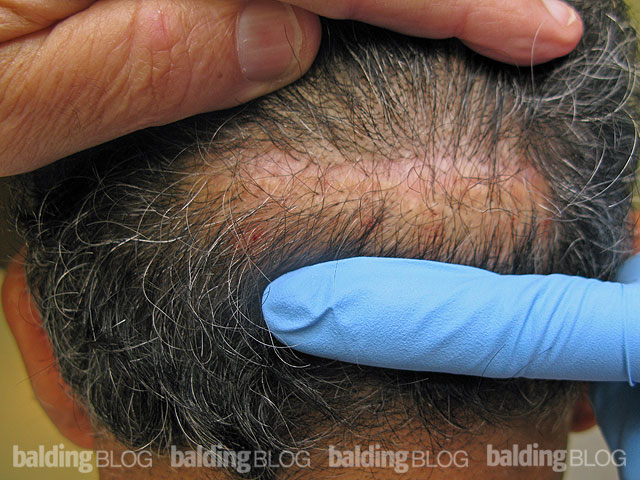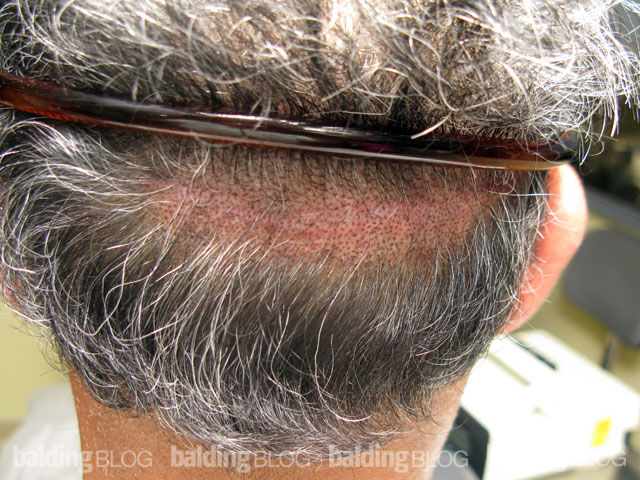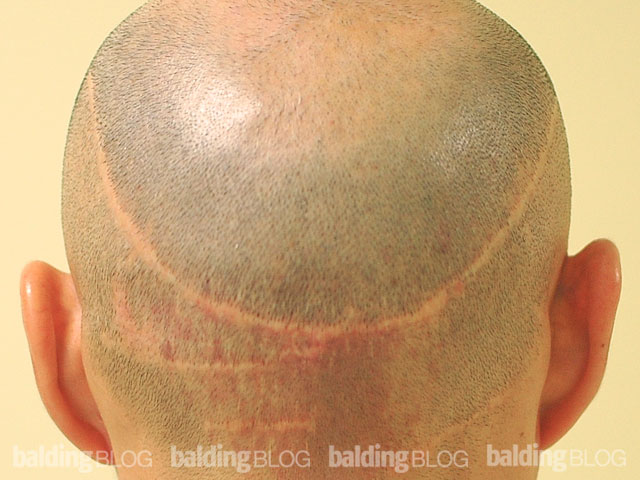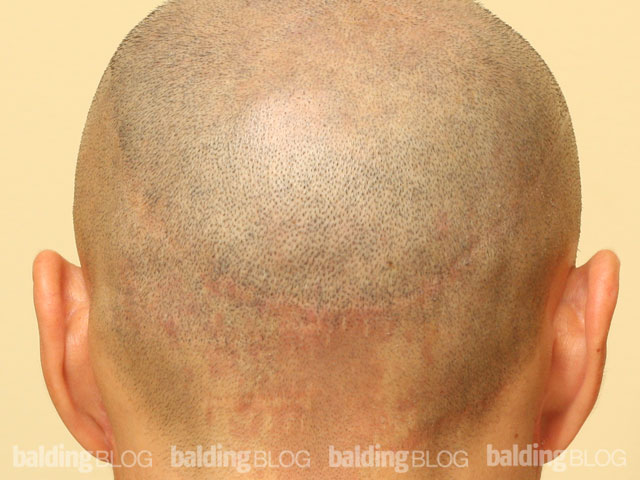I have hypertrophic scars from numerous cutaneous surgeries, and even under modest tension my scars tend to spread quit a bit. None of them have an adequate cosmetic result in my mind for a hair bearing region. As a result, harvesting grafts with a strip is something I am not considering. Given my propensity for making ugly scars, am I likely to have abnormally visible scarring from follicular unit extraction at the harvest or transplant site, or are these so small that hypertrophy and spreading are of little concern?

Nobody wants a bad scar, but for hair transplant surgery (or any surgery on the scalp), the scar should always be hidden under the hair if you keep it at a normal length (more than 2 inches). Even a bad scar can still be hidden after a haircut with a #3 clipper most of the time. I also realize many men would like to cut their hair very short in the back where the scar may be visible, and that’s when follicular unit extraction (FUE) may be a better option. However, if you have a tendency to have hypertrophic scars, then even the FUE may leave you with hundreds of noticeable dots.
As with everything in life, you need to have some perspective on what you are doing and what you are willing to give up. Nothing is perfect. There is no such thing as scar-less surgery. There are men who choose to have hair in the front and top, but sacrificing the gain with a scar in the back of their head. There are men who do not want any scars on the back of the head (linear or otherwise), and for them surgery is simply not an option. There has to be some give and take that you have to be comfortable with.
Think about cosmetic surgery on women: Women who want larger breasts will sacrifice their gain in cup size with a scar under the breast, around the areola, in the armpit, or in their belly button. Women who want a face lift will sacrifice a youthful face for a scar along the back of their ear and behind their front hairline.
Remember, keeping your hair very short after a hair transplant will not give you the best cosmetic results no matter how many grafts you transplant. A very short hair style will look much thinner than a longer hair style, which covers more of your head. This is because the surgeon is working with a limited number of grafts to cover a big area.






